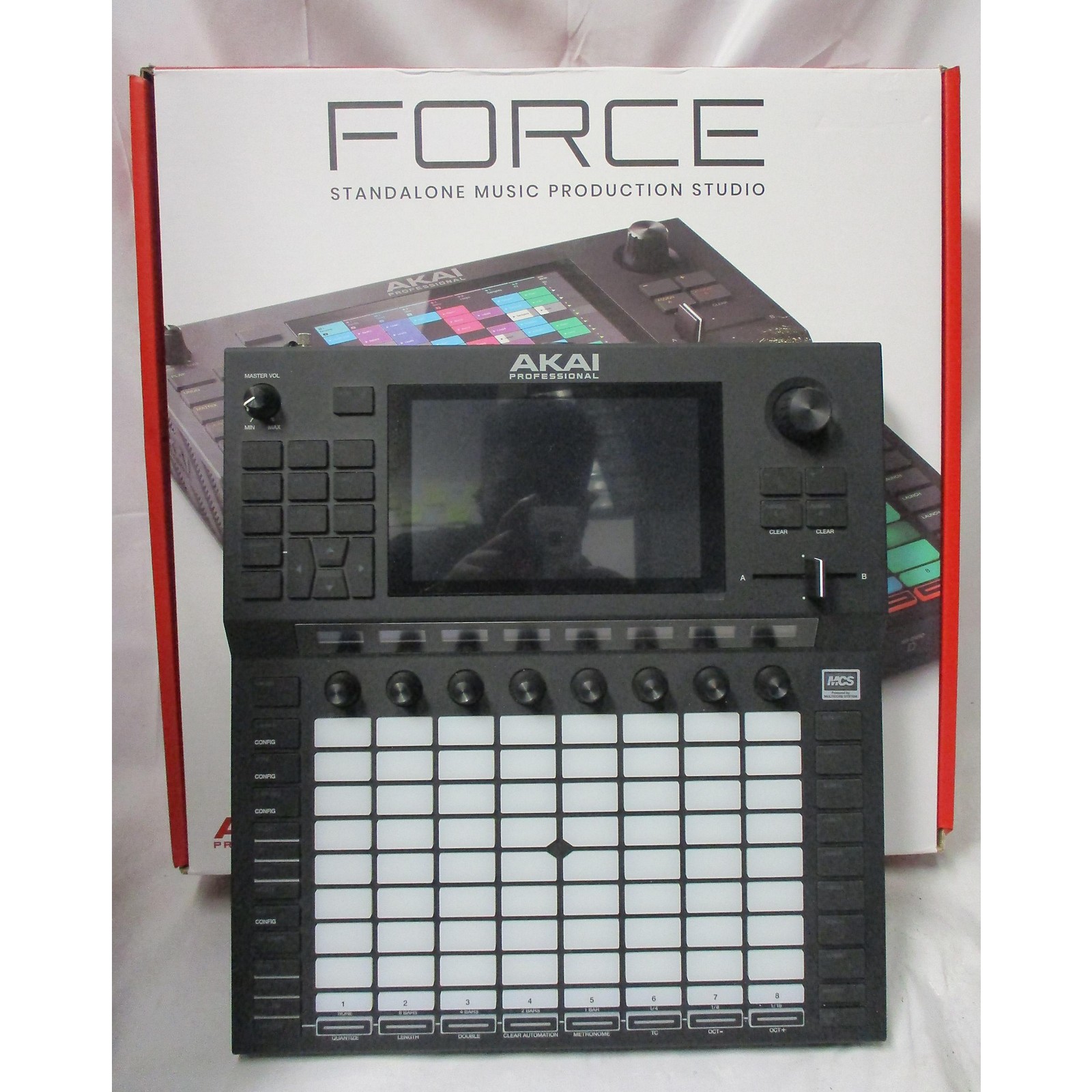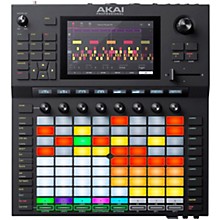

A column to the left has pad modes, clip functions, and track-based functions that work in combination with buttons below the grid. The lower deck follows the familiar 8x9 clip/scene launch grid, and has the same diamond centre cutout as the Push and the Launchpad to denote the quadrants. The top section has a 7-inch touchscreen, transport, navigation and mode buttons, and a crossfader. The panel is split across two levels, connected by a sloped section that puts the eight encoder displays at a nice viewing angle. It's not as compact and portable as the MPC Live, and sadly doesn't have an internal battery, but it's certainly less cumbersome than the MPC X. It's about twice as thick and pretty heavy, but remember this thing can replace your laptop and your controller. For comparison it has a slightly bigger footprint than a Push turned to portrait orientation. It looks a bit like a Push has been bolted onto an MPC Live, to the extent that when I first saw those leaked photos of it I assumed it was photoshopped. In fact the Force doubles as a Live controller, a job it can do at the same time as running stand-alone. This is not such a big departure when you consider that Akai created the first dedicated controller for Live (the APC40) and co-engineered the first Push.

The Force doesn't share the MPC's name, but it does incorporate a lot of its technology, repurposed into a new framework that closely resembles Ableton Live's Session view. and it turns out they already had that product in mind. In previous conversations, the Akai team have been patient with me, suggesting that what I was looking for was essentially a different product. But I've spent too long using grooveboxes and workstations based around clips, patterns and scenes. I spent a lot of time trying to get into the groove of MPC workflow I really wanted to like it because I love the self-contained hardware. But as innovative as they are, they consciously maintain the traditional working methods and project structure of the MPC, with its walled-off song sections. The current generation of MPCs, which started with the Touch then went stand-alone with the Live and MPC X, represent a big leap forward for the platform. Akai Pro have distilled the best of their technologies into a stand-alone clip- and scene-based performance and production workstation.


 0 kommentar(er)
0 kommentar(er)
